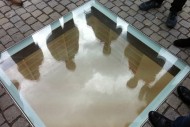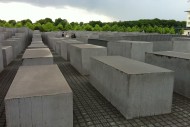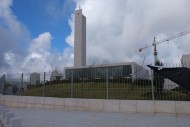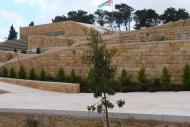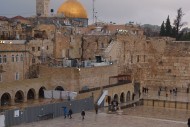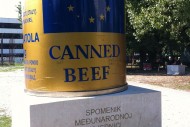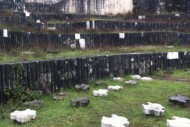Politics of Memory and Art Practices: The Role of Art in Peace and Reconstruction Processes [PIMPA/PPR], codirected by Pierre Hazan and Catherine Queloz
The Swiss National Science Foundation [SNSF]
Project CR11I1_143961, 2012-2014
Conceived and realised at CCC Research-Based Master Programme critical curatorial cybermedia studies, Geneva University of Art and Design (HEAD)
aims
methodology
The project Politics of Memory and Art Practices: The Role of Art in Peace and Reconstruction Processes [PIMPA / PPR] is concerned with the representation in the public space of massive violations of human rights. Since the 1980s, the will to commemorate has been manifested in a proliferation of remembrance initiatives, from the creation of memorials, the introduction of minutes of silence and changes in street names, to thematic exhibitions of contemporary art, or the development of “dark tourism” at the scene of massacres and concentration camps.
The role of artistic practice has yet received little study, despite the fact that remembrance initiatives appear to be an integral part of the politics of reconciliation.
Although many researchers in the fields of human rights, Peace Studies, political science, history and philosophy have recognized the importance of remembrance initiatives in reconciliation processes, they rarely question the artistic form and societal impact of such initiatives.
By bringing together the theoretical approaches of political science and humanities, on the one hand, and artistic approaches, on the other, PIMPA seeks to cross-reference the research areas by implementing a critical interdisciplinary methodology. The interdisciplinary approach that underlies this project is, thus, based on the idea that the space of contemporary art and the mechanisms that form part of a wider public domain require a radical re-reading and a broader conception of the arts. This re-reading will involve the testing of a number of critical and theoretical tools, given the complex production of memorial works and art projects.
Thus, the inclusion of this research project in the Geneva University of Art and Design (Haute école d’art et de design – Genève, HEAD), in particular in the transdisciplinary department of the CCC Research-Based Master Programme aims to foster its establishment in a setting favourable to the study of remembrance initiatives from the perspective not only of art, but also of political science and critical studies. These fields are, indeed, an integral part of the curriculum of art students and the approaches adopted by the artists, as well as by the researchers affiliated with the PIMPA-network.
research fields
To contribute to a better understanding of the dynamics and impact of commemoration initiatives in the process of recognition and reconstruction, the PIMPA project narrowed the field of study both in time and geography. It identified a set of commemoration dynamics specific to different geographical areas. These initiatives are, in addition, included in the public space and have been established since 2000. This allows to identify a preliminary typology for structuring the research. Through these case studies, the project has three main objectives: to analyse the way mass crimes and conflicts are represented; to examine the decision-making process of the different shareholders in remembrance initiatives (i.e., artists, governments, political parties, human rights activists, victims’ associations); and to study how these commemoration initiatives have influenced societal debates on the representation of the past, collective identity and reconciliation processes.
research stages
The SNSF PIMPA project is the output of three research steps PIMPA VIS707-10 and PIMPA VIS05-11, both supported by the strategic fund of HES-SO in October 2010 and in August 2012 as well as the project DO-RE delivered in March 2011. These first stages of the research have been crucial to build a network of international peer researchers collaborating from different disciplines and in diverse geographical areas. This phase allowed the research to establish different partnerships with the Museum of the Red Cross and Red Crescent, Geneva, the Musée Cantonal des Beaux-Arts, Lausanne, the Fonds municipal d’art contemporain, Geneva, the Academy of Fine Arts, Vienna and Saint-Gervais, Le Théâtre, Geneva. Furthermore, this early stage helped to identify the main research questions, to define specific methodologies and to select paradigmatic study cases. This major premise favoured the link with the CCC MA students more specifically through seminars and symposia, for instance, students realized projects and publications on memorials in the city of Geneva.
In April 2012, the interdisciplinary project Politics of Memory and Art Practices: The Role of Art in Peace and Reconstruction Processes [PIMPA/PPR], codirected by Pierre Hazan and Catherine Quéloz has been submitted at SNSF and financially supported from October 2012 to October 2014.



